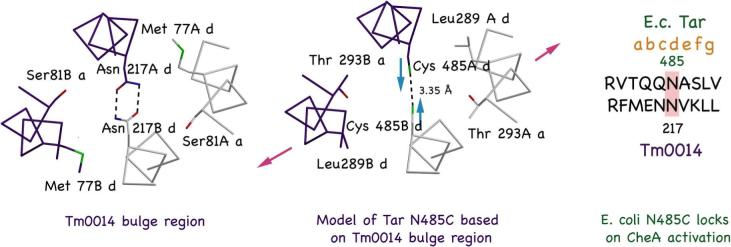Fig. 5.
Relevance of Tar lock-on disulfide bonds to the bulge distortion of Tm14. Sequence similarity between the heptads in Tar where an engineered Cys cross-link locks on CheA activation and the heptad in Tm14 that forms the bulge (center). Left: Helical packing of Tm14 showing the two internally hydrogen-bonded Asn217 residues. Middle: Model of Tar adaption region where disufide crosslinking locks-on CheA activity. A disulfide bond would generate an even shorter distance between helices and a more prismatic distortion of the bundle core. Right: Sequence alignment of the Tar heptad model with the Tm14C distortion region.

